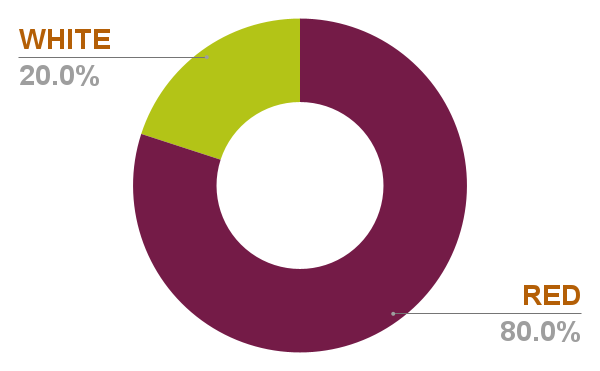By the numbers
-
5AVAs
-
<20Physical Wineries
-
0.08%Total Plantings
-
348Acreage Under Vine (Acres)
-
5AVAs
-
<20Physical Wineries
-
0.08%Total Plantings
-
140.83Acreage Under Vine (Hectares)

Overview
The Far North encompasses a sparsely populated, highly forested handful of winegrowing areas in 10 counties the far northern reaches of the state, including the counties of Humboldt, Shasta, Siskiyou, Tehama and Trinity. It reaches roughly from the coastal towns of Trinity, Eureka, Arcata and Fortuna east toward Lassen Volcanic National Park, with several national forests in between. Some of the larger population centers within the Far North include Redding, Red Bluff, Paradise and Chico.
Among the highest mountains in the state, Mount Shasta is part of the Cascade Range and rises as high as 14,179 feet /4,322 meters.
To the north is the Oregon border. To the south, below both Humboldt and Trinity, is Mendocino County, a vibrant wine community of its own.
The Far North wine industry is small. Within Humboldt and Trinity counties is the Willow Creek AVA, while Shasta boasts both the Inwood Valley and Manton Valley AVAs. Siskiyou has the Seiad Valley AVA, and in Trinity County is the Trinity Lakes AVA.
A variety of grapes are grown across the area, tending to heartier reds, including Rhône varieties like Syrah, as well as Cabernet Sauvignon, Merlot and Italian varieties like Barbera. That said, the area around much of Humboldt is influenced by its proximity to the coast, allowing it to successfully grow grapes for sparkling wine, as well as still Pinot Noir and Chardonnay. Pockets of Greek and German varieties are also grown.
Among the most famous wineries in the Far North is New Clairvaux Vineyard in Tehama County, an historic property owned and farmed since 1955 by a community of Cistercian-Trappist monks, and the first winery in America to grow Assyrtiko and Moschofilero. The same land was once owned by California governor, United States senator and industrialist Leland Stanford, one of the builders of the transcontinental railroad who made his original fortune in mining and merchandise during the California Gold Rush.
In the 1970s, vineyards began to be planted around other parts of Tehama County, becoming the Manton Valley AVA in 2014. Volcanic soils, snowmelt waters and an ideal combination of warm days and cool nights during the growing season combine for tannic structure and firm acidity in the grapes.
Seiad Valley, nearly at the Oregon border, is a tiny area surrounded by the Klamath Mountains, which borders the Pacific Crest Trail. It was granted AVA status in 1994 with only one winery in operation, since defunct.
Southern Humboldt County is considered a “banana belt,” situated between 1,800 to 2,000-feet/549 to 610-meters elevation and considered ideally suited for cannabis cultivation. Its combination of climate, weather, humidity, soil and geology have prompted consideration for the area to be cannabis appellated.
In 2018, the California Department of Food and Agriculture created the CalCannabis Appellations Project to help establish such designations across what are considered the premier growing regions for cannabis, specifically in historically well-established areas across Humboldt, Mendocino and Trinity counties, often referred to as the Emerald Triangle.
